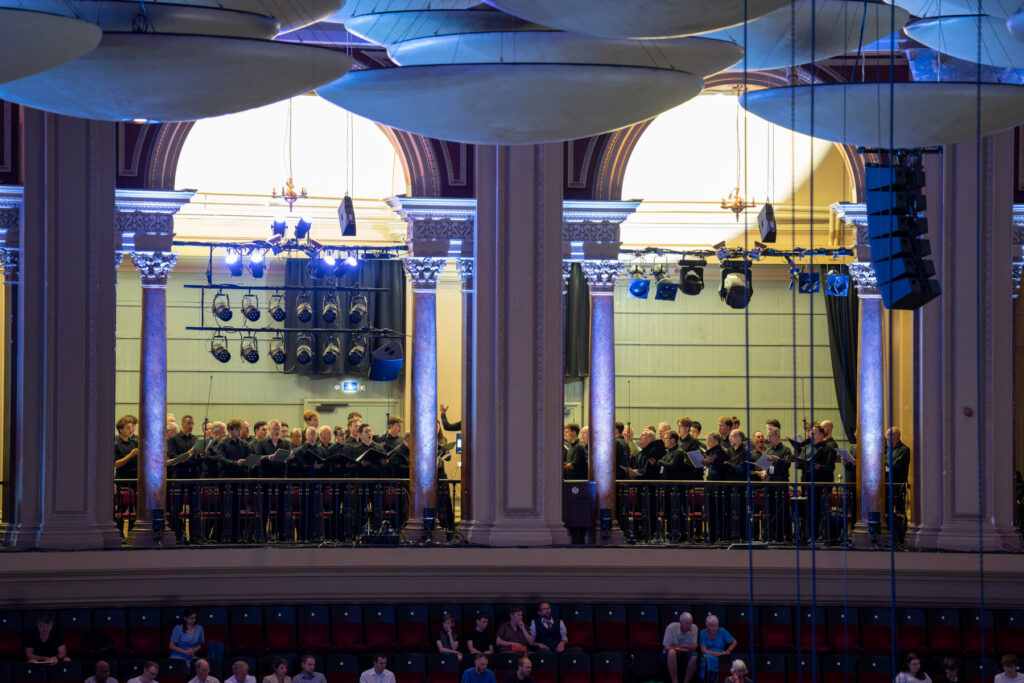Those new to Ferruccio Busoni’s Piano Concerto might have wondered about his quasi-symphonic concept, a work of Mahlerian proportions that Benjamin Grosvenor considers to be a “kind of operatic symphony, where the piano is the central character in the drama”. Completed in 1904 and lasting some 70 minutes, the work’s five movements culminate in a choral finale (echoes of Beethoven and Liszt), its mystic hymn of praise given to a male chorus. No less curious is Busoni’s use of a German translation of a Danish play by Adam Oehlenschläger about Aladdin beginning with the words “Lift up your hearts to the eternal Almighty/ Draw ye to Allah”.
As a summation of his youth, Busoni’s concerto is a work of extraordinary imagination, taking inspiration from several composers including Brahms and Liszt. Beyond that there’s the influence of Busoni’s native Italy with quotations from Neapolitan songs and Italian dance forms – note the Tarantella fourth movement. As such, his music fits into no convenient pigeonhole, defying categorisation, once prompting the musicologist Edward Dent to liken the composer to “a stranger speaking a language which no one understands and offering riches in a currency which the local money market does not acknowledge”.
Marking Busoni’s centenary year, this concert featured only the second performance of his concerto at the Proms. Both the rarity factor of the work – it holds a legendary status for many pianists – and the appearance of Benjamin Grosvenor combined to make this a very special occasion. Its notorious demands are not for the faint-hearted, with the veteran pianist Garrick Ohlsson declaring its challenges to be “absolutely immense”, adding that it has some of the most “cruelly difficult writing in any piano concerto”. Little wonder the work hasn’t been heard at the Proms for over thirty years when Peter Donohoe created a sensation in 1988. Grosvenor is the latest torch bearer to follow in the footsteps of the work’s renowned champions that include Egon Petri, Noel Newton-Wood and John Ogden.

With Grosvenor’s recent performing experience of the concerto earlier this year in Reykjavik and Berlin, one could reasonably assume it would be in safe hands. And so, it proved to be in an account characterised by athleticism and poise, Grosvenor dispatching its demands seemingly with ease. From his rhetorical first entry (shades of Tchaikovsky) he paced himself with admirable control through thickets of chords where every finger is required to perform gymnastic miracles. Whether at the forefront of unfolding events or in collaborative mode, he judged weight and tonal colour to perfection. As Grosvenor observed in a recent Guardian interview, the “role of the pianist is frequently heroic, … but it is multi-faceted: sometimes the orchestra has the principal themes; the piano takes the spotlight and then moves out of it; it blazes, comments, transitions, dreams; sometimes supporting the orchestra by laying down delicate blankets of notes or thick carpets of sound”.
His initial bombast, more pomp than jubilation, within the opening Prologo e introito felt entirely natural and all subsequent material, whether delicate or thunderous, was all purposefully integrated. The diabolical dance of the Pezzo giocoso found piano and orchestra in a rousing partnership, while the spacious central movement, Pezzo serioso, brought out the generosity of Grosvenor’s warm tone, albeit temporarily relieved from pounding the keys. A return to percussive writing in the ensuing All’italiana allowed a degree of scintillation, its Rossini-like parody a striking foil to earlier bravura. Onto the Cantico finale where the male voices of the London Philharmonic Choir and the Rodolfus Choir sang high up in the gallery, where they followed the composer’s original instruction to be hidden from view. From this lofty position Busoni’s part-writing flowed beautifully, a glowing transformation all the more poignant for its Schubertian warmth of expression. Altogether, a peerless account, regardless of Busoni’s unique creation. An affectionate rendition of Bach-Siloti’s Prelude in B-minor formed a captivating encore.
The evening had begun with Rachmaninoff’s Symphonic Dances, a richly scored orchestral farewell from 1940. With little sense of valediction, this vividly projected and polished account felt almost Classical in its clean lines and transparent textures. Trenchant rhythms and sweeping lyricism were carefully balanced, while avoiding any sentimentality or Hollywood mawkishness. A soulful alto saxophone was one of many illuminating woodwind passages in the opening Dance. Elsewhere, piano, glockenspiel and bass clarinet variously caught the ear, but it was the brio of the outer passages that compelled attention. Skittering woodwind and ominous brass added to the macabre of the waltz movement – a ghostly ballroom – with characterful contributions, amongst others, from oboe, cor anglais and violin. The finale was no less colourful, and suitably combustible for the clash between Medieval and Orthodox chants, brass and timpani thrilling here, and bringing this riveting account to an exciting close.
David Truslove
Sergei Rachmaninoff – Symphonic Dances; Ferruccio Busoni – Piano Concerto
Benjamin Grosvenor – piano; London Philharmonic Orchestra; London Philharmonic Choir, Rodolfus Choir; Edward Gardner – conductor
Royal Albert Hall, London, 5 August 2024
Top image: Benjamin Grosvenor piano; Rodolfus Choir; London Philharmonic Choir; London Philharmonic Orchestra. Edward Gardner conductor.
All photos by Andy Paradise courtesy of the BBC.